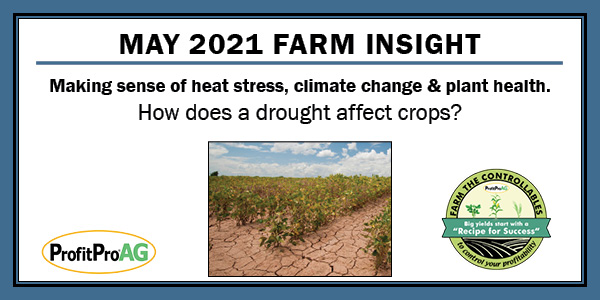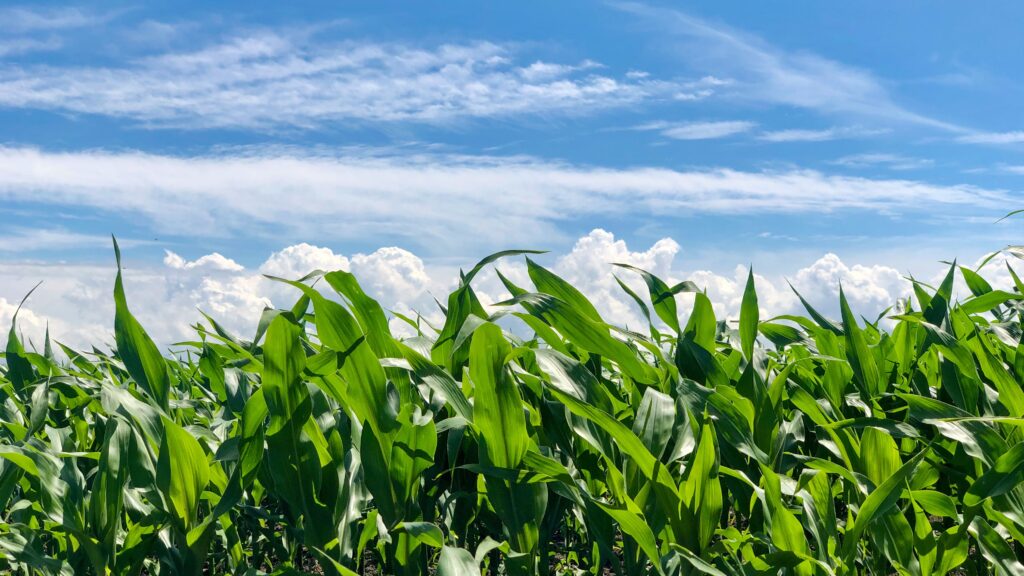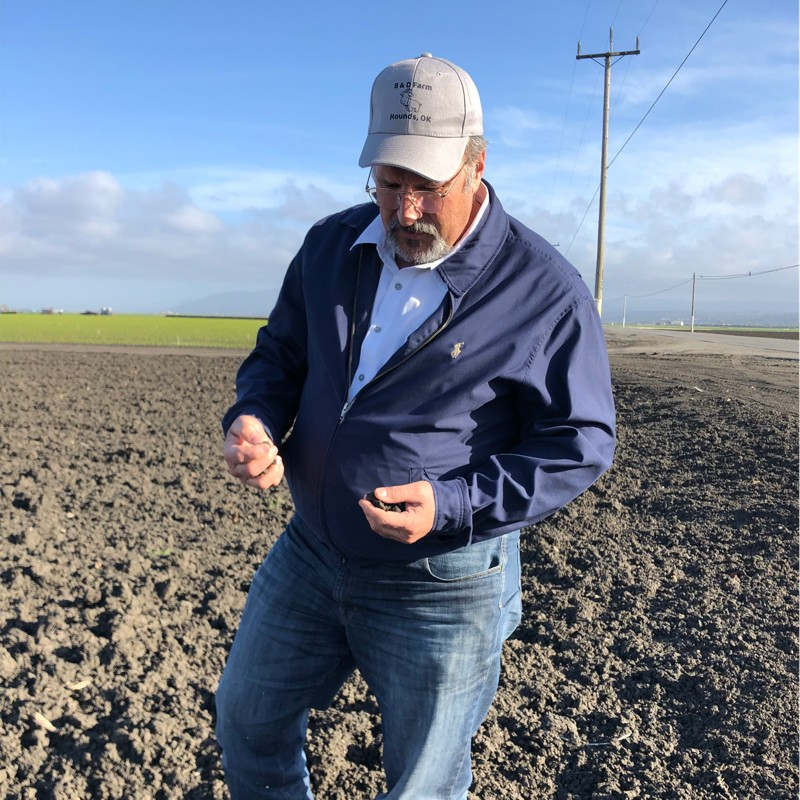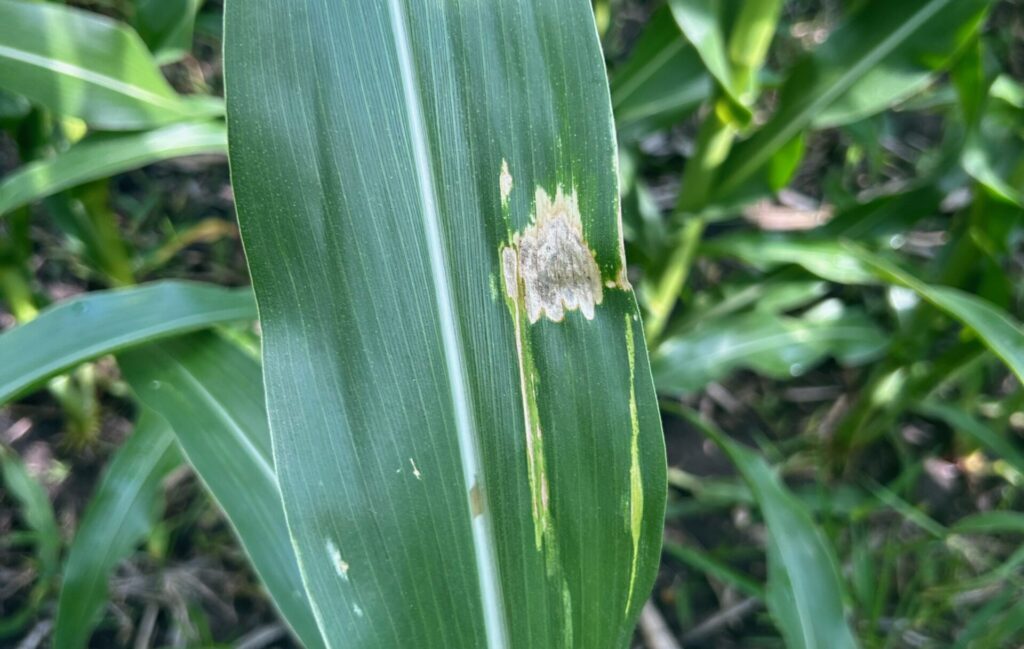Reduce Tillage Costs
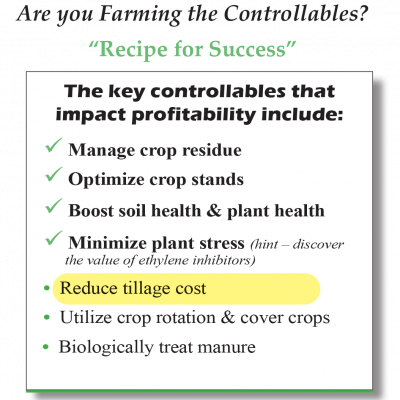
How Much Is Tillage Costing You—Especially in a Drought?
Rolled corn leaves. Cracks in the soil. Empty rain gauges. If these are common sights in your area this summer, you’re not alone. Big portions of Iowa, Minnesota and Wisconsin are experiencing moderate to severe drought, while parts of the Dakotas are suffering through extreme drought, according to U.S. Drought Monitor data from late June 2021.
While there’s plenty of talk about praying for rain and jokes about rain dances, why aren’t more people discussing tillage? How much is tillage really costing you, especially when Mother Nature turns the water off? We contend that intensive tillage is one of your biggest enemies when it comes to water conservation, soil health and productive crops.
“I’ve seen that reduced tillage is gaining steam with more growers,” said Dennis Klockenga, a crops specialist with ProfitProAG. “They’re tired of seeing their soil blow away when the wind is gusting 30 to 40 miles per hour, and they’re looking for ways to cut costs.”
No-till isn’t the only way to improve soil health and increase water retention, Klockenga added. “Farmers who use light tillage are finding that their crops are holding up a lot better in the dry conditions this year.”
Understand the turmoil of tillage
To understand the connection between tillage and water retention in the soil, let’s review some soil basics.
In regions with a hot, dry summer, evaporation of soil moisture is enemy number one when it comes to raising a good crop. Bare soil will be significantly hotter and lose more moisture than soil covered with residue.
What you want instead is a soil filled with aggregates. When you pick up a handful of soil, and it crumbles apart into little pieces, you’re looking at soil aggregates. Aggregated soil particles are vital for moisture infiltration and retention. The space between the aggregates provides pore space for the exchange and retention of air and water.
Aggregates form when soil is alive with a healthy mix of plant roots, earthworms and an array of beneficial microorganisms. “Soil is the source of life, but we’re killing it with too much tillage,” Klockenga said.
Intensive tillage butchers the biology in the soil. It slices and dices the soil, creating havoc for the soil biology, especially the delicate fungal network that enhances soil structure and improves water retention.
Examine visible effects of invisible forces
Intensive tillage also contributes to soil carbon loss, since tillage releases a large amount of carbon dioxide (CO2). If you could see this invisible process in action, it would billow up like a large cloud of dust when a tillage tool is pulled through a field.
“This invisible gas indicates organic matter loss in the soil, a loss that negatively affects soil fertility, soil biology, soil structure and water infiltration,” noted Don Reicosky, a retired soil scientist for the U.S. Department of Agriculture, Agricultural Research Service (ARS) in Minnesota.
During his work with the ARS, Reicosky helped develop a portable chamber that measured the amount of CO2 released from soil, based on different types of tillage. “We would drop the chamber over the soil behind the tillage tool and measure CO2 and water loss,” he explained.
Tillage treatments included:
- A fluted coulter with a 3-by 6-inch-wide track.
- A fertilizer knife that produced about a 6-inch, V-shaped disturbance.
- A mole knife that produced about a 6-inch, U-shaped disturbance. A subsoil shank that ran about 14 inches deep.
- A moldboard plow that ran about 10 inches deep across the entire 30-inch row.
While the bulk of CO2 release came immediately after the tillage tool passed through the soil, CO2 continued to be released for many hours afterward. Compared to tillage with the fluted coulter, the moldboard plow released nearly 18 times more CO2 within five hours of tillage, and more than 10 times more CO2 up to 24 hours after tillage. (See figure 1 for more details.)
“Intensive tillage with a deeply-engaged tillage tool is a double negative from a carbon footprint standpoint,” Reicosky noted. There’s more diesel exhaust entering the atmosphere, along with more CO2 from the “burp”
of CO2 escaping from the soil.
Why does the loss of CO2 from the soil matter?
Carbon is essential for good soil structure, which, in turn, impacts the soil’s water-holding capacity. As liquid carbon streams into soil aggregates via plant roots and fungal linkages (which haven’t been destroyed by tillage), it enables the production of glues and gums known as glomalin, which holds soil particles together. These soil aggregates allow water and oxygen infiltration around roots.
Establishing a good soil structure also enables nitrogen-fixing bacteria to function. You will rarely see
a nitrogen-deficient plant in a healthy ecosystem.
“Too much tillage can undo these advantages that come from a healthy soil structure,” Klockenga said.
Three steps to healthier, resilient soil
So let’s go back to the original question. How much is tillage costing you—especially in a drought?
We recommend three practical steps to help you reduce those costs, boost your soil’s water-holding capacity, and produce healthier, higher-yielding crops:
1. Reduce tillage. Minimizing the frequency and/or intensity of tillage promotes:
- Greater moisture-holding capacity in your soil.
- Less CO2 and greenhouse gas emissions being released from your soil.
- More carbon in the soil.
- Less wear and tear on farm machinery.
- Lower fuel and labor costs.
- Time savings.
- Less risk of soil erosion.
Better soil aggregation, which contributes to healthier, more resilient soils. - Greater protection for the delicate fungal network and earthworm channels that enhance soil structure and soil health. Bio-pores created by earthworms (as well as cover crop roots) allow plant roots to grow deeper into the soil. Deeper rooting provides a larger reservoir to store water from previous rains, which can be used during later-season droughts.
2. Break down residue efficiently. Maybe you’re thinking, “Okay, the advantages of reduced tillage make sense, but I still need tillage to help break down residue.” We hear you. Too much residue that fails to break down efficiently creates a lot of challenges, from overwintering insects and disease pathogens to hair-pinning. Seeding into heavy residue can cause hair-pinning, because the disc does not cut through the residue, and instead pushes the residue into the seed slot. The seed will not have good soil contact, resulting in poor germination and stand establishment.
Proper residue management starts by harnessing the power of microbes to break down crop residue. This process is so important that it’s Phase 1 of ProfitProAG’s 3-phase “Recipe for Success” for better crop production.
“Top producers know that managing this residue efficiently is a ‘second harvest,’” said Klockenga, who recommends BioRegenerate from ProfitProAG. This easy-to-use product can be applied in the fall after harvest,
so don’t winterize your sprayer too early. “Keep your sprayer ready to go, because it will pay,” Klockenga said.
BioRegenerate also offers a proven way to cut your fertilizer bill. Consider this: a 200 bu/A corn crop can offer 40 pounds of nitrogen (N), 50 pounds of phosphorus (P) and about 150 pounds of potassium (K) from the residue, based on conservative estimates, along with 45% carbon. When you apply BioRegenerate and allow the beneficial microbes to break down the residue efficiently and make these nutrients available, this translates into money.
3. Use cover crops. Seed a cover crop on your acres to build even more resilience into your soil. “When the cover crops grow and you look at all the plant material on top of the soil, know that it will be double this amount below the soil,” Klockenga said. “Let those roots do some natural tillage for you as they build soil health.”
For more information on BioRegenerate or ProfitProAG’s “Recipe for Success,” contact Klockenga at 320-333-1608, or dklockenga@profitproag.com.
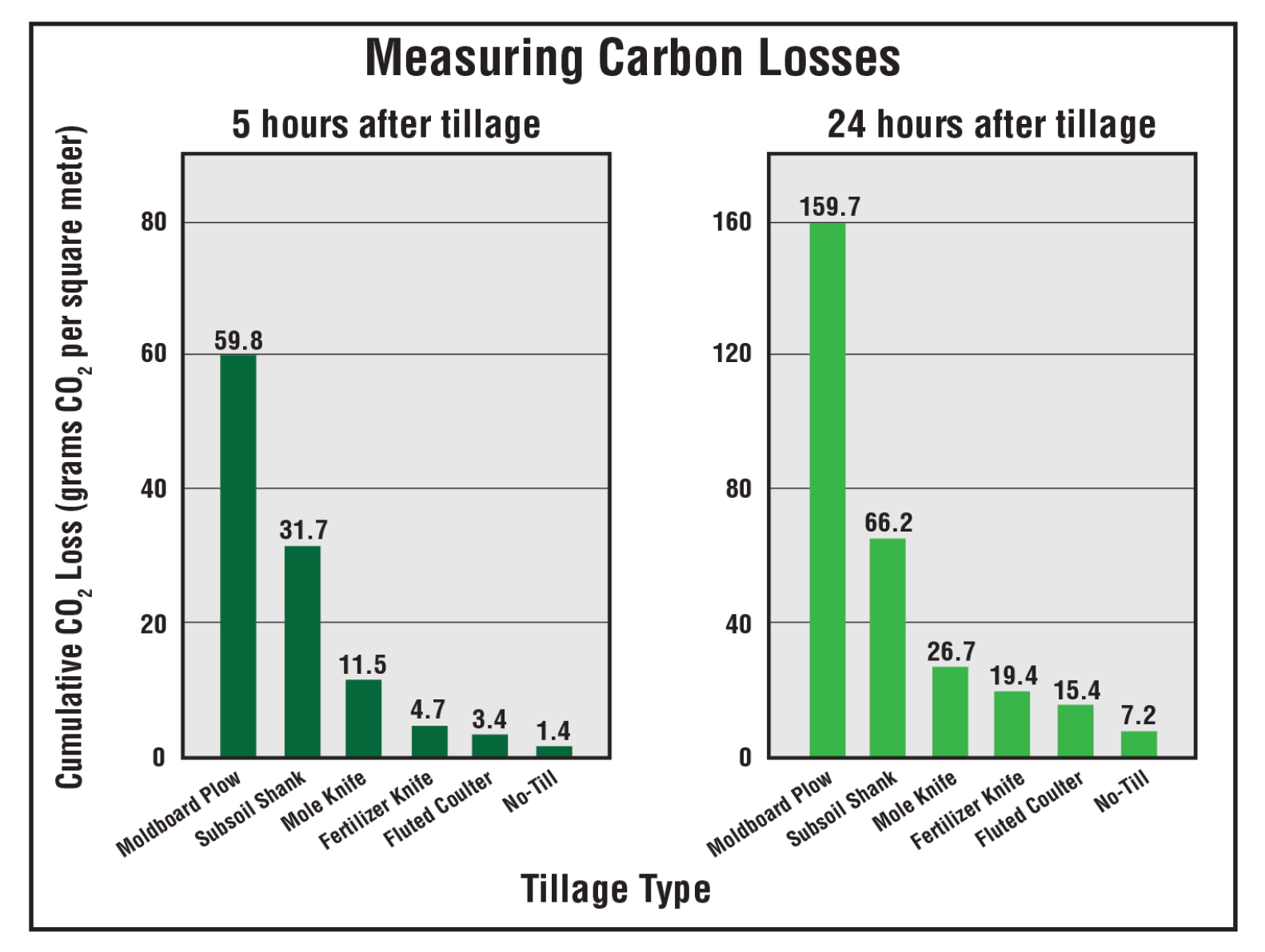
Figure 1: Lasting effect. Don Reicosky’s portable chamber measured the amount of CO2 released from soil based on different types of tillage. While the bulk of CO2 release came immediately after the tillage tool passed through the soil, it continued to be released for many hours afterward.

